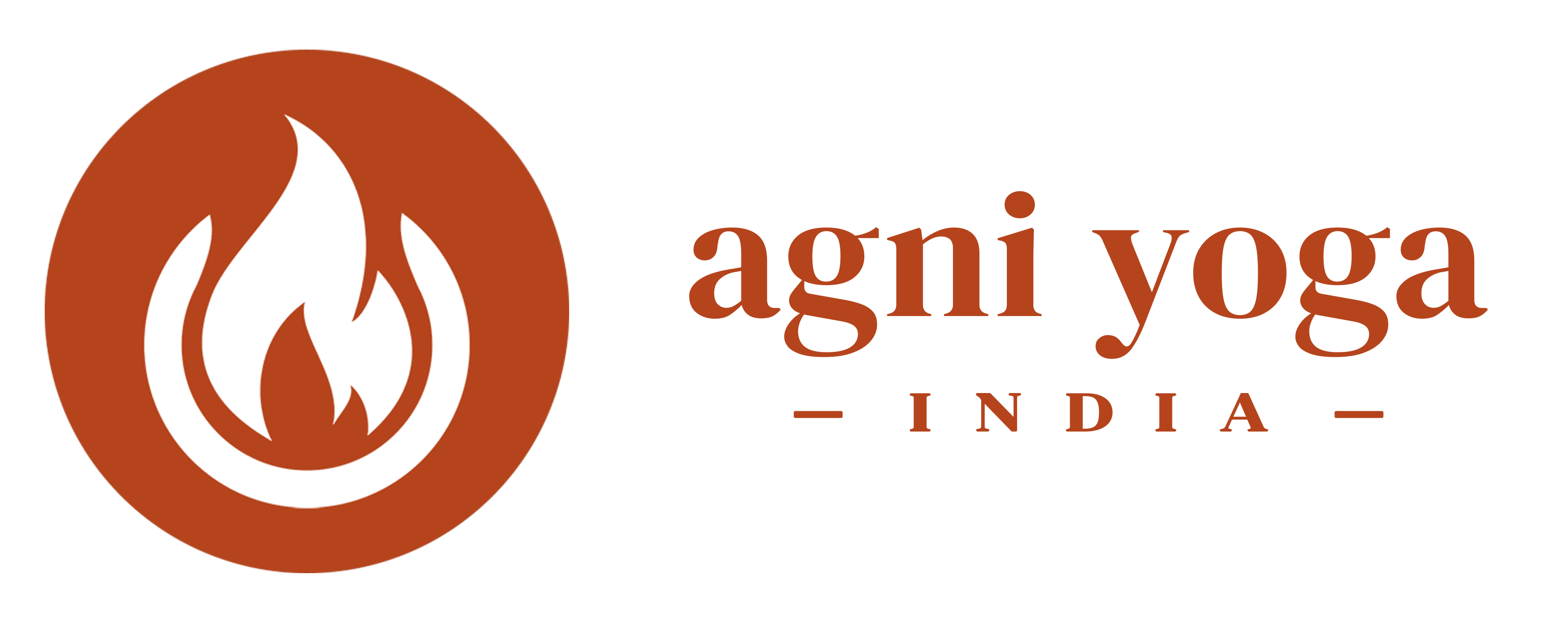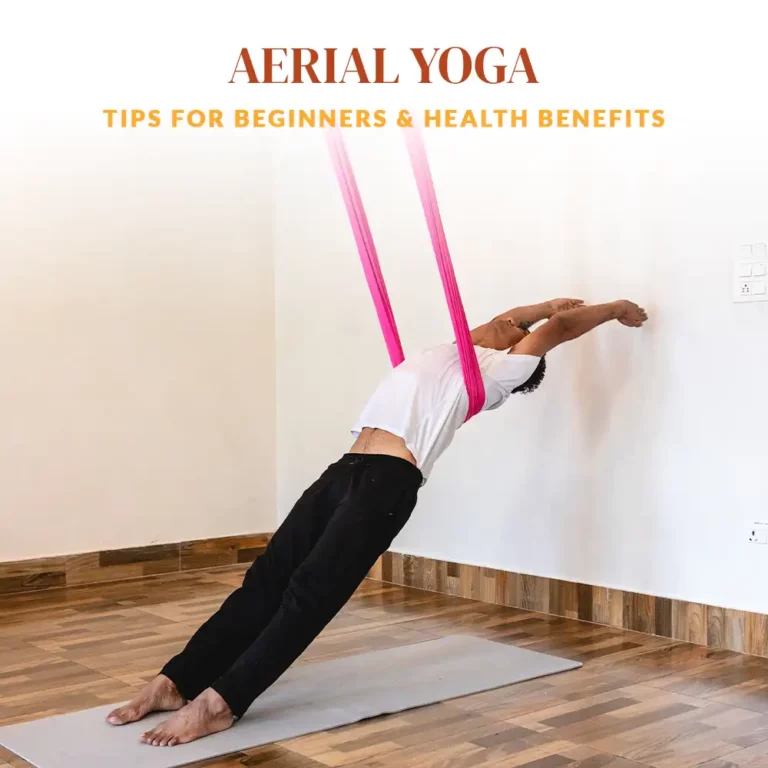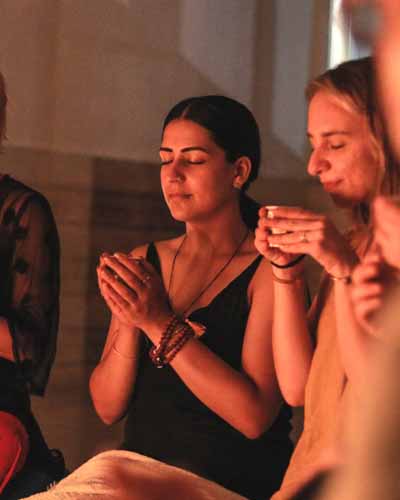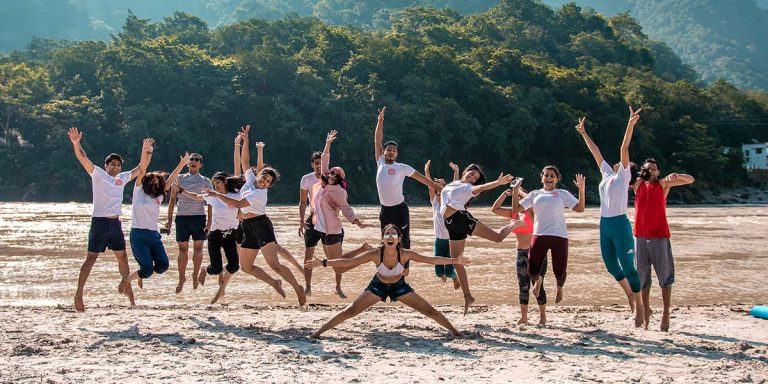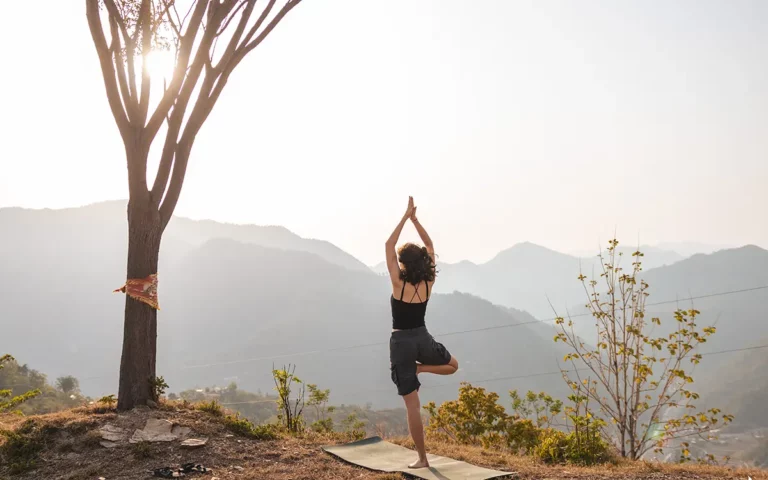Pranayama Yoga – Benefits, Steps, Types, Poses, Images & More

What is Pranayama?
Pranayama as a word when divided into two in Sanskrit translates to ‘Prana’ which means “life force energy,” and ‘Ayama’ which means ‘expansion’. This term is used in yogic teachings as a general reference to the manifest energy of the entire universe. This original creative power is constantly flowing around us and inside of us. The breath is considered to be the most subtle form of prana in our bodies, thus it is most often described in yoga’s breathing exercises. Prana forms the energy of our consciousness, but it also is responsible for regulating all of our body’s physical functions.
The function of prana Prana is the source of all movement in the body. It regulates all of our conscious and unconscious bodily functions like our breath, digestion, blood flow, elimination, and cellular growth and healing. The flow of prana distributes its energy through the body based on the quality and capacity of the nadis energy channels and the chakras energy centres. Prana also animates and affects the quality of our thoughts, emotions, and consciousness. Our overall health and well-being are tied directly to the quantity and circulation of prana in our body.
There are five further manifestations:
- Prana: it has an upward movement and is responsible for all inputs into the body. Food, fluids air and sensory inputs, and mental impression.
- Apana: it has a downward movement and is responsible for all forms of elimination and reproductive function – stool and urine, the expelling of semen, menstrual fluid, the fetus, and the elimination of carbon dioxide through the breath.
- Udana: it has an upward movement and is responsible for the growth of the body, the ability to stand, speech, effort, enthusiasm, and will. This prana is at our hand, leg, and head.
- Samana: it has an inward movement, moving inward from the periphery, and works in the gastrointestinal tract to digest food in the lungs, to digest air or absorb oxygen, and in the mind to homogenize and digest experiences, whether sensory, emotional, or mental.
- Vyana: moves from the center of the periphery. It governs the circulation on all levels. It moves the food, water, blood, and oxygen throughout the body and keeps our emotions and thoughts circulating in the mind. In doing so, it assists all the other pranas in their work.

What are the Health Benefits of Pranayama?
Pranayama helps to expand the life force within us. With the increase in the amount of Mental Health problems and disorders, many people have begun to move towards Yogic practices such as pranayama as it helps to centre the breathing patterns. There are about 20 different pranayama techniques that individually have their physical and mental benefits.
When an individual goes through the patterns of anxiety attacks and depression, the first thing that gets affected is the breathing pattern through access amount of stress in the body, to break the chain of endless thoughts the quickest method is to focus on the breath. This helps the nervous system to return to the present moment, once there is awareness in the present moment, the breath can help the mind to calm itself down.
Some pranayama practices help to increase the capacity of the lungs, strengthen the abdominal muscles, and promote healthier blood circulation as the oxygen in the body is the key to maintaining neutral blood pressure levels.
For Example,
Kapalbhati is Heating pranayama known as the ‘Shinning skull’ breathing technique which helps to increase the heat in the body through forceful exhalation from the abdominal muscles and neutral inhalation through the nostrils. It helps to purify the nerves and the organic channels so that oxygenated blood can pass throughout the body easily and deoxygenated blood can be purified easily.

Pranayama for Daily routine (Images)
Anulom Vilom – a type of alternate nostril breathing.
Make the Pranava mudra with the right hand.
Pranava mudra is made by bending the index and middle finger towards the palm.
When we bring the right hand up to the nose we can block the right nostril with the thumb and then change to blocking the left nostril with the ring finger, which may be supported with the little finger.
Slowly inhale through the left nostril, close the nostril, and exhale slowly through the right nostril. Inhale through the right nostril and then exhale through the left nostril. This is one round.
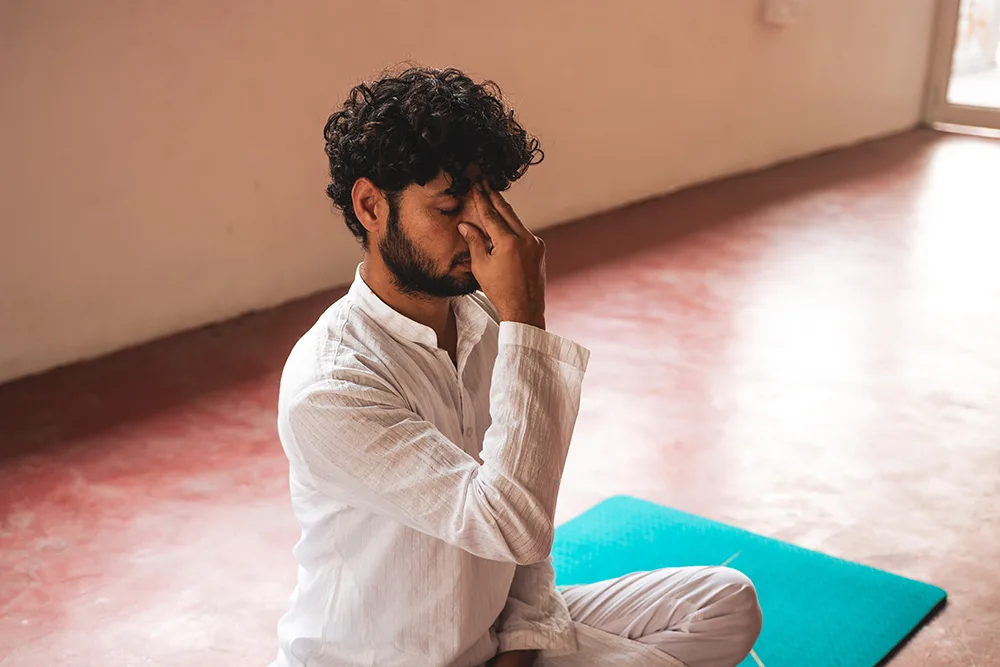
Continue at your own pace. If that is comfortable a ratio can be added, such as 4:4 or 4:8. Always start by inhaling through the left nostril and finish by exhaling through the left nostril.
The left nostril is known as the ‘Ida’ nadi, which represents the Moon’s energy. This relates to the calming energy in our body so it will give us more benefits to practice in this way.
Bhramari – Inhale slowly and deeply through the nose. On exhalation make the sound of ‘m’, as in the third letter of ‘aum’, like the humming sound of a bee. Exhale slowly and do not strain. The sound should be smooth, even, and controlled. The exhalation will naturally be longer than the inhalation. Continue If that is comfortable block the ears with the fingers to increase the vibrations through the body. One can block the ears by placing the thumbs in the ears and elbows pointing out, arms by the sides of the head and fingers around the head, or by blocking the ears with the index fingers and elbows pointing down, arms in front of the chest.
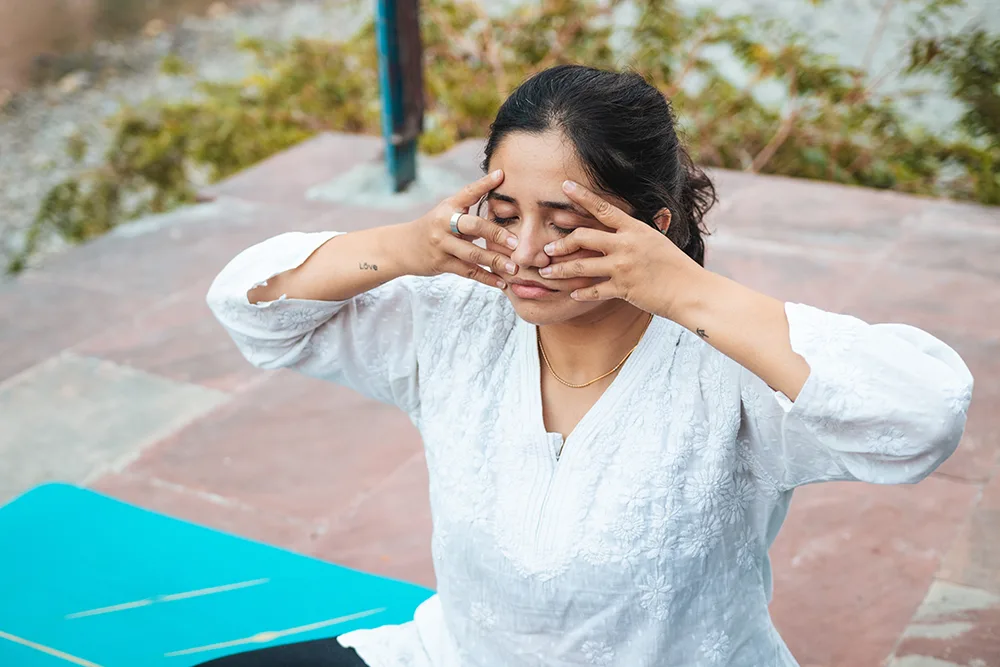
If bhramari exhalation is comfortable one can start inhalation with ‘m’ sound. It is higher and more difficult to create but very beneficial and comes with practice. Again the sound should be slow and controlled, without strain. Ujjayi is a good alternative to Bhramari inhalation and can be substituted, or Bhramari exhalation can be practiced with normal inhalation.
Nadi Shodhan – a different type of alternate nostril breathing that helps to balance the Ida and Pingla Nadi in the body. The preparation of Nadi Shodan is similar to Anulom Vilom except there is an additional practice of Kumbhak (Retention of breath) in Nadi Shodhan. This pranayama practice helps to activate the Parasympathetic Nervous system.

Kapalbhati – Kapalbhati is a breathing technique that means ‘Skull Shinning’, In this practice, the breath is forcefully exhaled through the nostrils by strongly drawing in the abdominal muscles after which the inhalation happens passively.

FAQs
Can people with Depression practice pranayama?
Particular types of Pranayama help to activate the body. People who are suffering from depression might find it difficult to connect with their prana (life force or energy). Once the body becomes familiar with pranayama practice that increases their energy, the practice helps to heal.
How can anxiety be controlled through pranayama?
An anxious brain is running at 100kmph speed with thoughts. It may be difficult to stop that chain of thought but immediate attention to our breath helps to slow down the chain of thoughts. A consistent discipline of practicing pranayama does help to improve anxiety and its symptoms.
How to begin the practice of Pranayama?
The guidance from a yoga teacher can be the first step in learning different practices of Pranayama. Following the footsteps of a guru/teacher helps establish a goal and a vision, this can become the stepping stone towards the practice of Pranayama.
How long should the practice be?
One can start with daily 10 minutes of pranayama practice. The line of order starts with heating pranayama such as Kapalbhati or Bhastrika followed by cooling practice like Anulom Vilom, Bhramari, or Sheetali pranayama.
